If you don’t know, the Dwarflab Dwarf 2 is a great budget smart telescope.
It is the cheapest smart telescope, and also the smallest and lightest. But how good is it for solar imaging?
I decided to give it a test with the aim of getting the best possible result with as little work as possible.
Read on to see how it turned out.
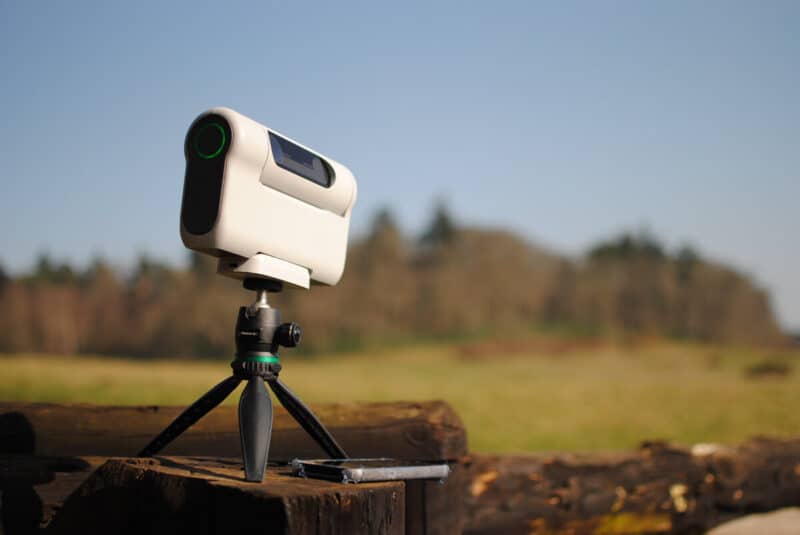
How to Photograph the Sun with the Dwarf 2
Getting Your Gear Set Up
To take photos of the sun with the Dwarf 2 you are also going to need:
- A Dwarf 2 telescope (obviously)
- Set of two ND (Neutral Density) filters
- A magnetic Dwarf 2 filter adapter
These come included if you buy the Deluxe package of the Dwarf 2, or you can buy them separately here from Dwarflab.
The filters screw into the adapter and then easily pop on to the telephoto and wide-angle lens like you can see in this picture:
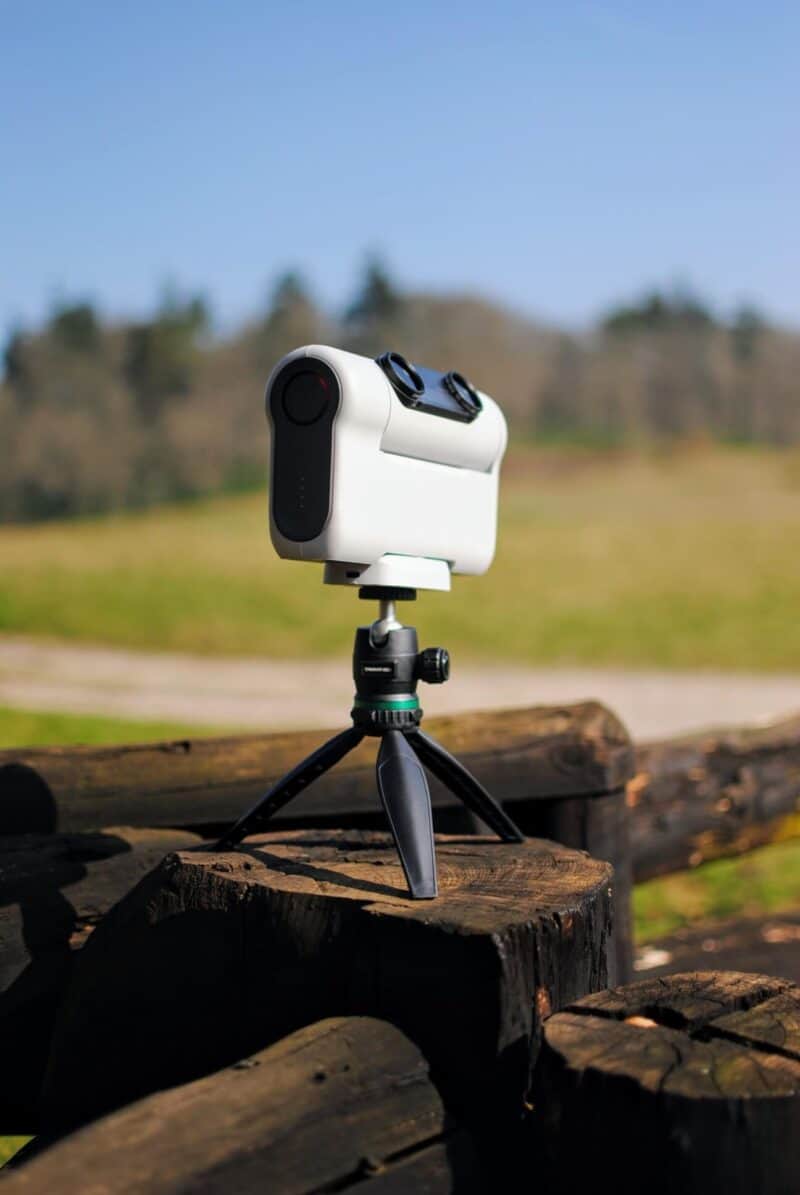
Using the App
The process that I went through in the Dwarflab app once my phone was connected to the telescope was:
- Function > Sun Track
- Use Astro Mode
- Function > Star Target > Sun
- Telephoto Settings: Gain = 0, Shutter speed = 1/200
- Focus > Auto, but then zoom in by pinching the screen and then adjust to get sunspots as sharp as possible
- Format > FITS
- Count = 100
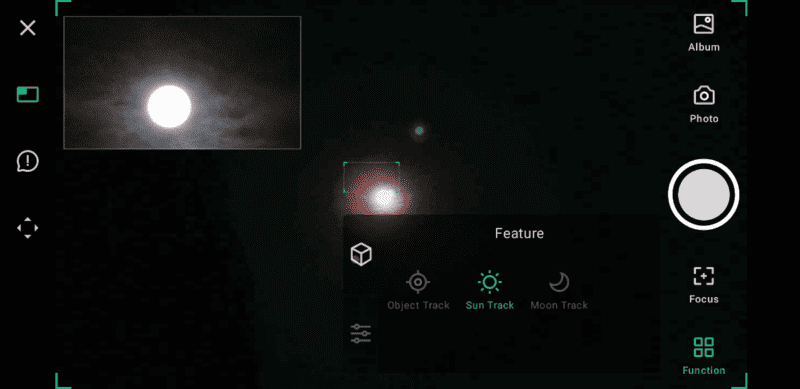
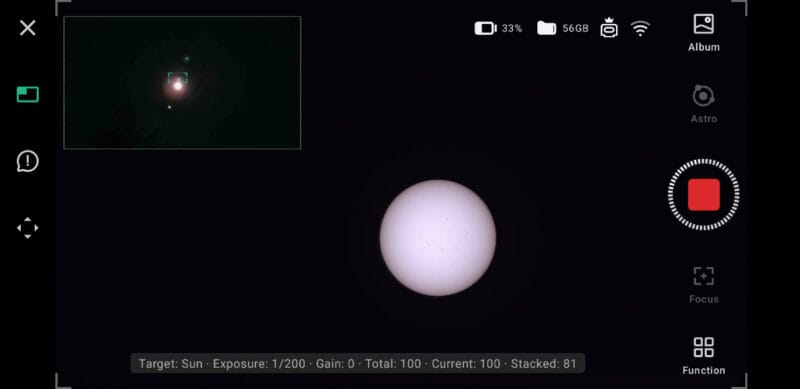
My first attempt at this was to just snap a one off shot with no stacking. This is the result:
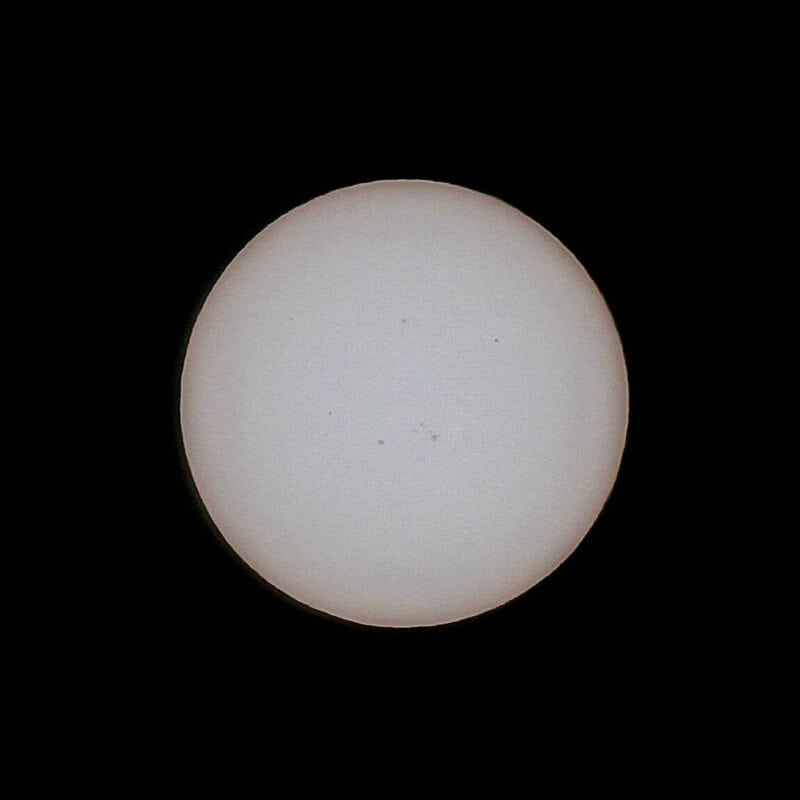
Note, I have done no processing of this image at all, just cropped it a little for the screen.
It is fairly sharp and you can see sunspots, but we want better.
Next I tried stacking a large number of images and having the app process them into a TIFF file, but the end result was actually worse than the above image and so i discarded it.
Finally, I used the settings outlined above with 100 images stacked as FITS files and got this:

You can see that it is the best yet, with visible sunspots. However, it looks a bit pale and unexciting.
I wanted to see what I could do with this just using the most basic post-processing I could think of, so I took the image to the free online tool Pixlr Express for some tweaks.
By increasing the warmth in particular I was able to make it look much more “sunny” and just played around with a few other settings like brightness and contrast.
With just a few seconds work I was able to come out with this:
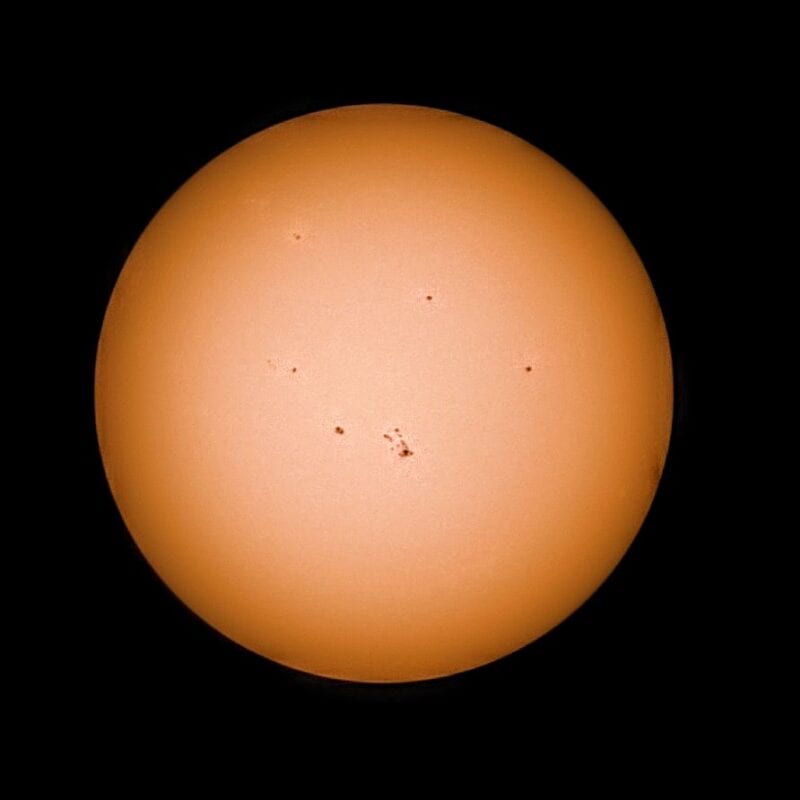
Not a bad effort for a budget smart telescope with some quick, free processing.
Verdict: Is the Dwarf 2 good for solar imaging?
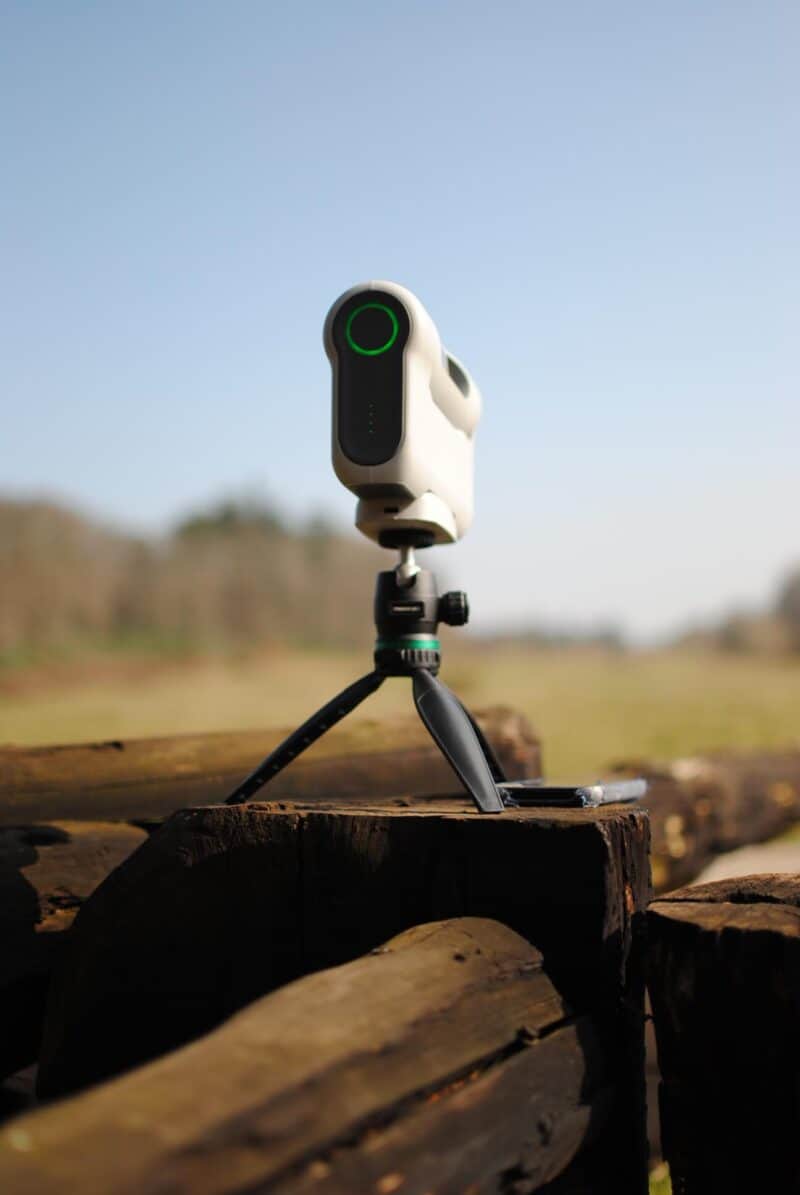
Overall, I was pretty happy with the end result. The whole process took about an hour in total and that included some trial-and-error. Next time I will be a lot quicker.
Those wanting to take it to the next level can also export the raw (FITS) files into more specialized solar post-processing software like AutoStakkert.
But I was surprised how good my photo was even just tweaking with a basic free program like Pixlr.
I would say that some processing is necessary to get a good result, but it was really so easy that this shouldn’t scare anyone.
I would say that some aspects of using the Dwarf 2 for this are not perfect. For instance, trying to center the sun is a little fiddly, as is changing the settings like the shutter speed dial on the app. You need good eyesight and steady hands or it may get a little frustrating.
There are other ways to take photos or videos of the sun with the Dwarf 2. In particular, if you want to use it to capture a solar eclipse, the timelapse option would be great, as you’d be able to capture the whole event of the moon moving over the face of the sun and turn it into a short video clip.
Please let me know below if you have any questions or to share your experience of using the Dwarf 2 to image the sun.
Links to other resources:
- Dwarflab: How to Shoot the Sun with DWARF II
- Skies & Scopes Dwarf 2 review
- Skies & Scopes Smart Telescope Hub


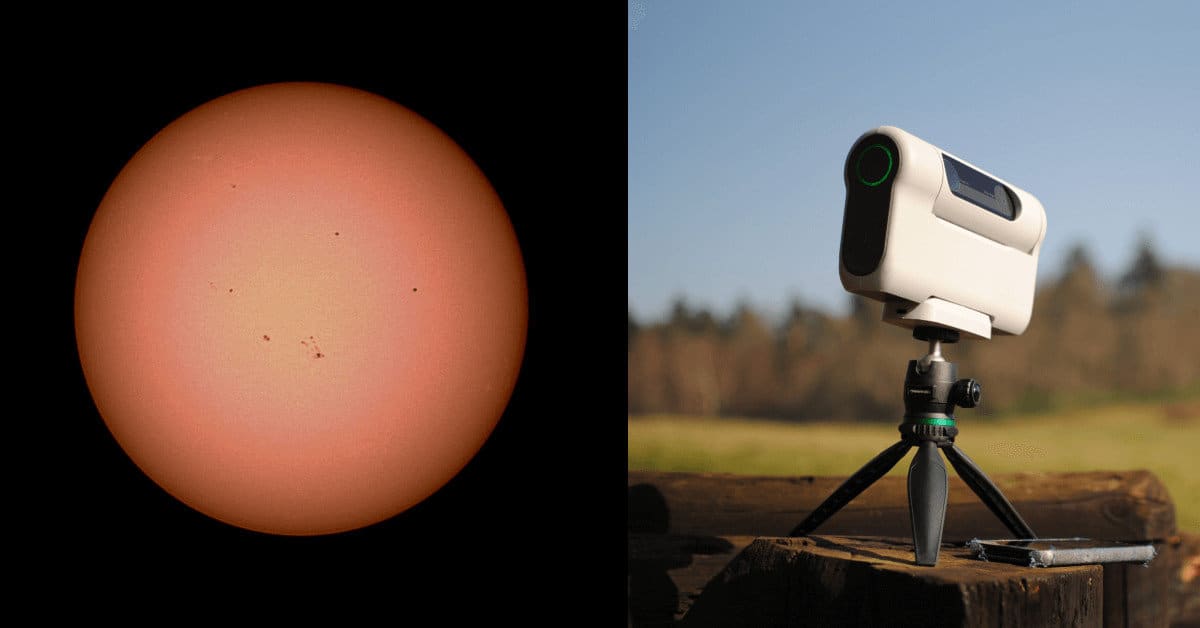

You are absolutely amazing.
Thank you for sharing your experience.
Cheers from the beautiful Australia.❤️🥰♥️🌙⭐️🌟
Thanks Sylvia!
Thanks Anthony,
A very clear and useful overview. I have a Dwarf II and find it generally very easy to use for solar, lunar and deep sky photography. I haven’t used any of the image processing apps yet so will give pixlr / Autostakkert a try. Would welcome a post on the best free / low cost image processing apps and how to use them….
Thanks Steven! From my experience so far, a little post-processing with external software makes a world of difference.
I’ll look into drafting something along the lines of what you ask but Pixlr is free for a limited number of photos a day. It’s pretty basic but I think that’s not a bad thing for many people.
Other more advanced but free options include Autostakkert, Registax, Wavesharp, Siril, and Deep Sky Stacker. And some that offer a free trial are Astro Pixel Processor and Pixinsight, plus Photoshop/Lightroom or Affinity Photo for Mac users.